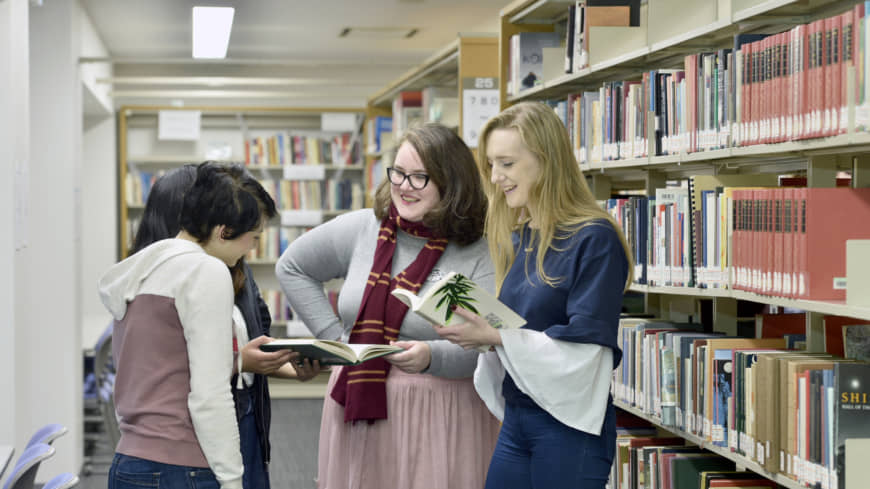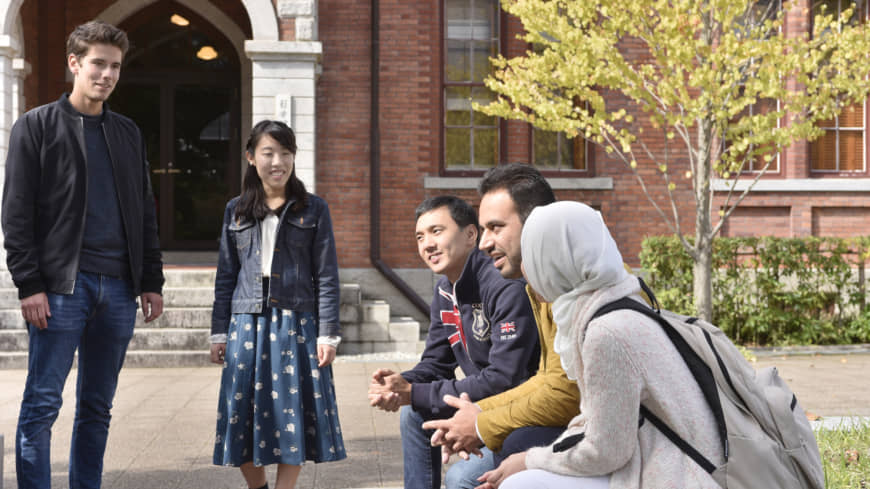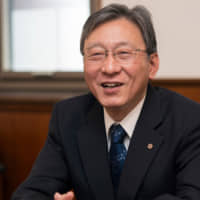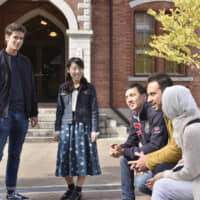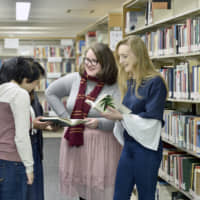In 1864, when 21-year-old Niijima Jo defied a ban on overseas travel and smuggled himself aboard a Boston-bound boat, he set off on a mission.
The son of a samurai in a period of isolationism, Niijima was determined to look beyond the rangaku Western learning texts he’d read in Japan and experience these philosophies and scientific findings for himself.
When he returned home a decade later, he brought with him a bachelor’s degree from Amherst College in Massachusetts (the first ever awarded to a Japanese), a new name — Joseph Hardy Neesima — and became a delegate to learn about education systems in Europe and the U.S. He was also an interpreter for the delegates.
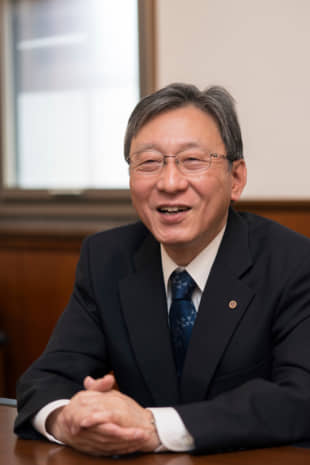
He also had $5,000 he’d raised to help fulfil his dream of establishing an educational institution with a difference.
A year later, he opened Doshisha Academy — present-day Doshisha University — and the rest, as they say, is history.
The purpose for the institution’s founding, Neesima wrote, was not only to encourage students to learn the English language, but also “to cultivate students … who are able to put their conscience into practice.” This is something he believed could not be achieved “through intellectual education” alone.
The cultivating of students through an “education of conscience” would have been seen as a revolutionary concept at the time, and remains a core element of the Kyoto-based university’s educational philosophy to this day, said Doshisha University President Takashi Matsuoka.
“Upon his return to Japan, Neesima was determined to change society through cultivating people who embraced his idea of using one’s abilities as conscience dictates,” said Matsuoka, a Doshisha alumnus who holds the position of professor of materials engineering at the university.
“To that end, he planned to create an educational environment, based on Christian principles, that encouraged liberalism through independent thinking and actions. Moreover, another founding philosophy was internationalism, to see the world with a broad perspective,” he said.
Even taking into account his considerable foresight, it’s unlikely Neesima could have envisaged the degree to which Doshisha has flourished over the intervening years.
In 1879, the institution’s first graduates numbered just enough to form a rugby team — 15. Exactly 140 years later, there are nearly 30,000 undergraduate and research students at two main campuses that boast a combined 14 faculties and 16 graduate schools.
Global reach
What probably would have impressed him more, however, is the degree to which Doshisha has embraced his views on internationalism, particularly over the past decade.
During that time, Doshisha has been selected for the Global 30 and Go Global Japan Project, which were initiated by the government to advance globalization in Japanese universities.
Furthermore, the university has established the Institute for the Liberal Arts (ILA) — where all classes in its four-year liberal arts program are held in English. Of the university’s 1,500 international students, nearly 20 percent study at the ILA. Also, the university has established the Faculty of Global Communications and the Faculty of Global and Regional Studies, which require students to study abroad as a prerequisite to obtaining degrees.
And while domestic offerings have become increasingly internationalized, as of this spring Doshisha has also been able to offer semester programs abroad through its first overseas campus.
The Doshisha EU Campus at Tubingen University is located on the grounds of the world-renowned University of Tubingen in Germany, with which Doshisha has cooperated in a student exchange program going back almost 30 years, underlined by the opening of the Tubingen University Center for Japanese Language (at Doshisha University) in 1993.
“All at once, Doshisha has grown into a university offering a truly global education,” said Matsuoka, who became president in 2016. “Less than a decade has passed (since the formation of these new departments and learning centers), but it’s exciting to think about how these courses will be appraised and what kind of impact the students who graduate from them will make as they make their way in the world.”
The new facilities are all part of the incremental steps that the university has continued to take in an attempt to realize not only Neesima’s desire to better society, but also his view that it would take 200 years to satisfactorily formulate a university and a sound educational philosophy.
Indeed, as Doshisha heads toward 2025 and the 150th anniversary of its founding, it has implemented a wide-ranging program that serves as another big stride toward that objective.
Vision 2025
Titled “Vision 2025,” the program incorporates six so-called visions, including a commitment to pioneering new learning methods and further evolving internationalism. Each aims to help students attain their goals as “Doshisha-jin” — namely, those who uphold Neesima’s conscience-based principle and at the same time endeavor to become more globally aware.
“Those visions may appear unconnected, but are in fact like six spokes of a wheel, with the student at the center,” he said. “By carefully joining them together we can better achieve our goal of cultivating talented people who can effectively contribute to the needs of society.”
According to Matsuoka, a determination to “advance creativity and collaboration in research” is the most important and he believes it is key to further advancing the university’s international image.
Matsuoka believes that the Doshisha EU Campus at Tubingen University will also serve as a hub for faculty exchanges and research collaboration not just between scholars and scientists from Doshisha and Tubingen, but also other universities throughout Europe and beyond.
He also feels that educational activities will not be limited to the comparative study of Japan, Germany and Europe, but cover a much broader spectrum of fields, including global studies and the “study of conscience.”
In the same vein, it will also provide a fertile base for interdisciplinary research, much as Doshisha in Kyoto has instigated through its Space-DREAM (Doshisha Research Project for Active Life in Space Engineering and Medical Biology) Project. The university introduced it last year to integrate various fields, such as science and engineering, sports health science and neuroscience, creating a platform for interdisciplinary research on how to prolong life expectancies and overall health through researching space-related biomedical engineering.
According to Matsuoka, the Space-DREAM Project is intended as a base for international collaborative research that will even involve collaborating with NASA.
“I think this kind of global research will continue to grow and there will be a continuing need for education and research that can be offered by Doshisha … that will directly connect with our continuing desire to nurture talent that can contribute to global society,” he said.
“With its history and culture, Kyoto is already a huge pull for people from countries worldwide. My hope is that Doshisha, with its globalized outlook and desire to foster talented people who act according to their own judgement and conscience that was instilled from the university’s very inception, will become a central part of that.”
Doshisha University
Address: Karasuma-higashi-iru, Imadegawa-dori, Kamigyo-ku, Kyoto-shi, 602-8580 Japan
E-mail: [email protected]
URL: https://www.doshisha.ac.jp/en/



